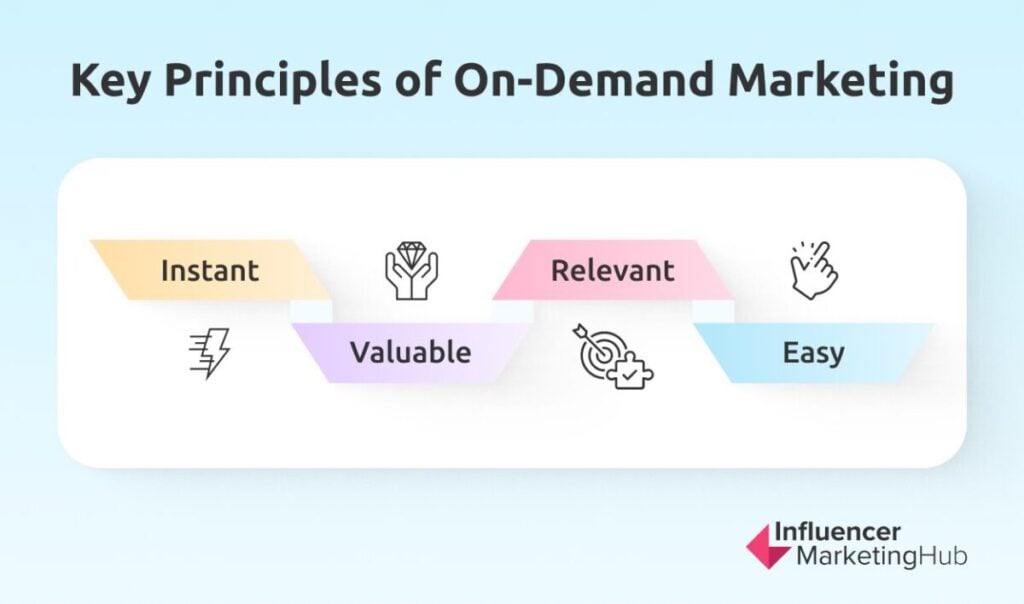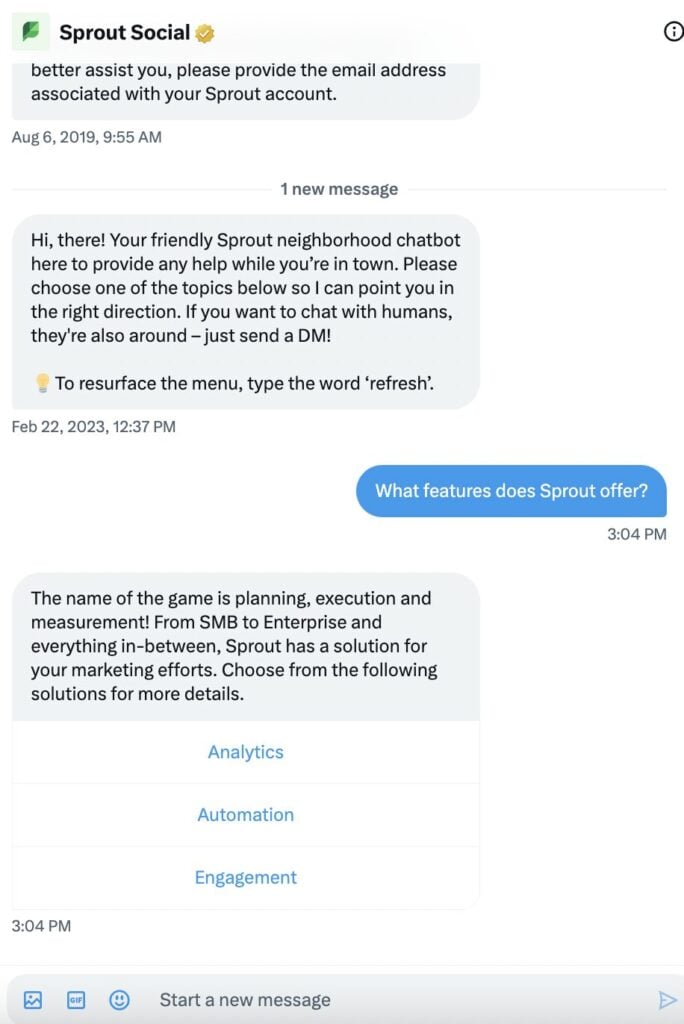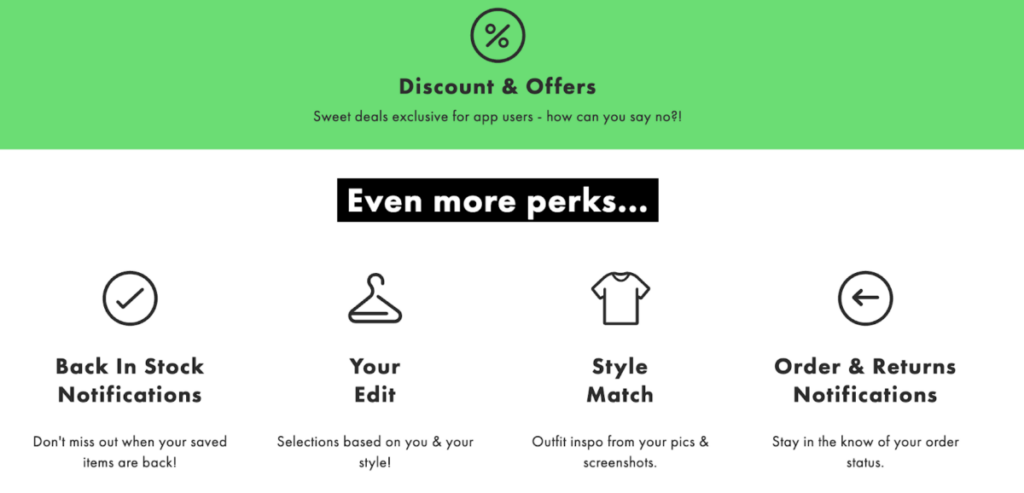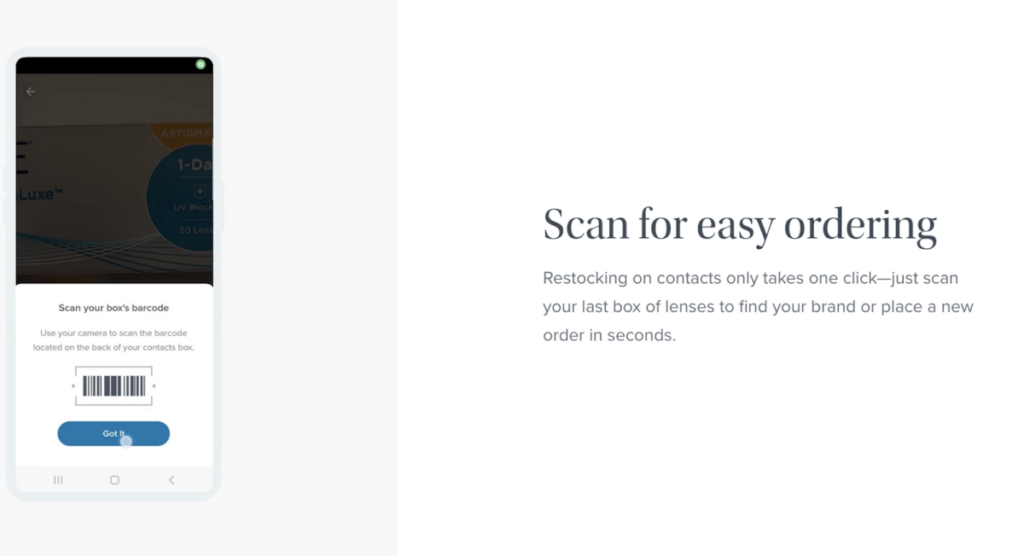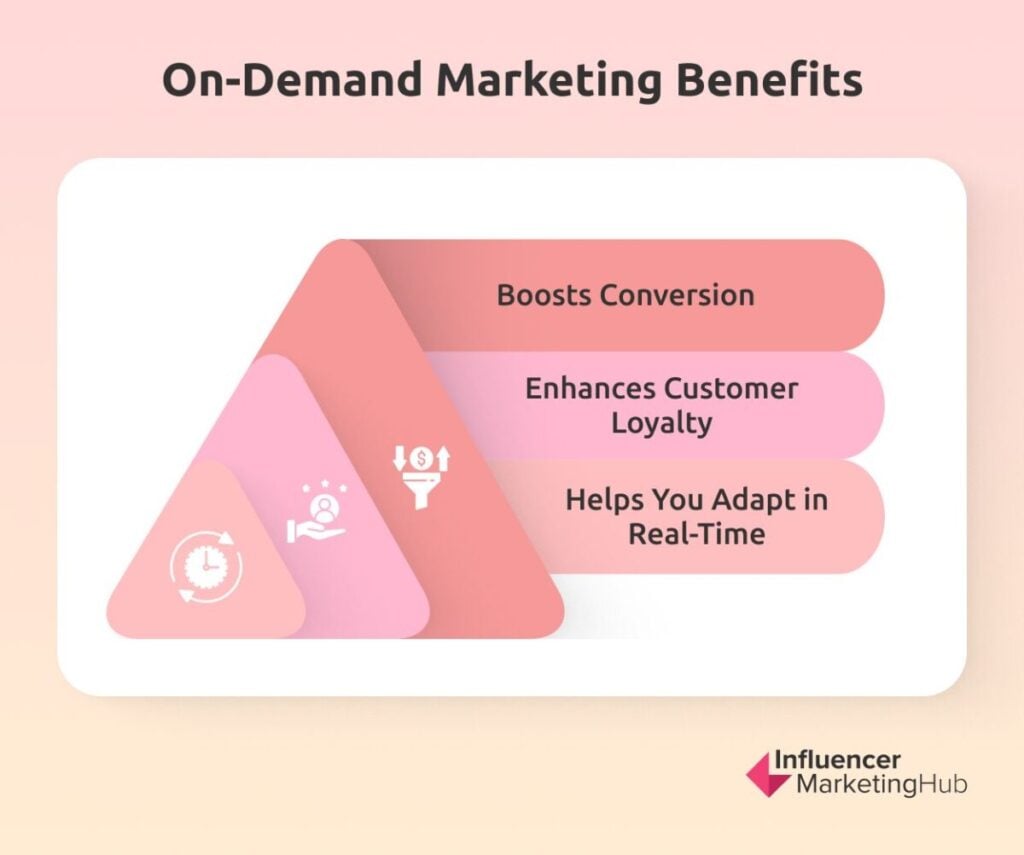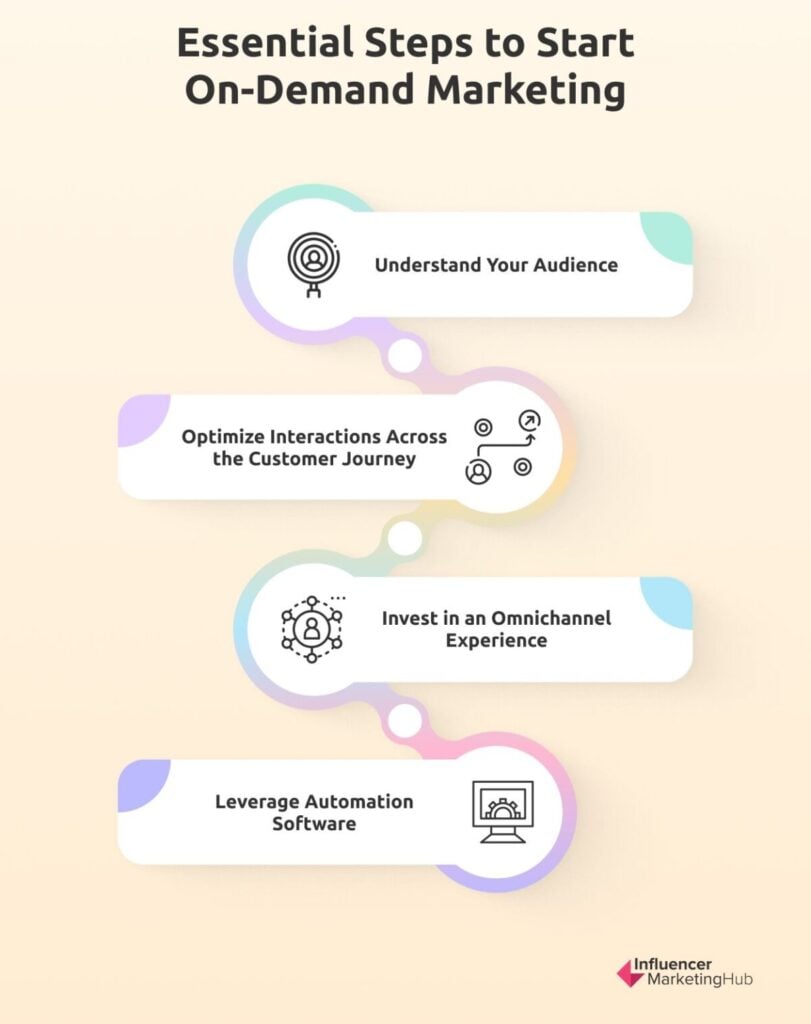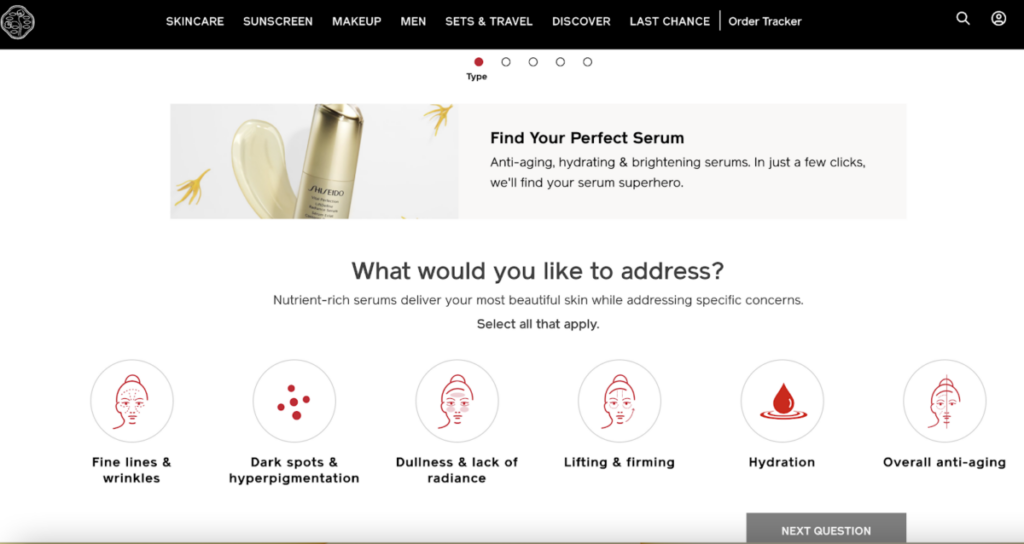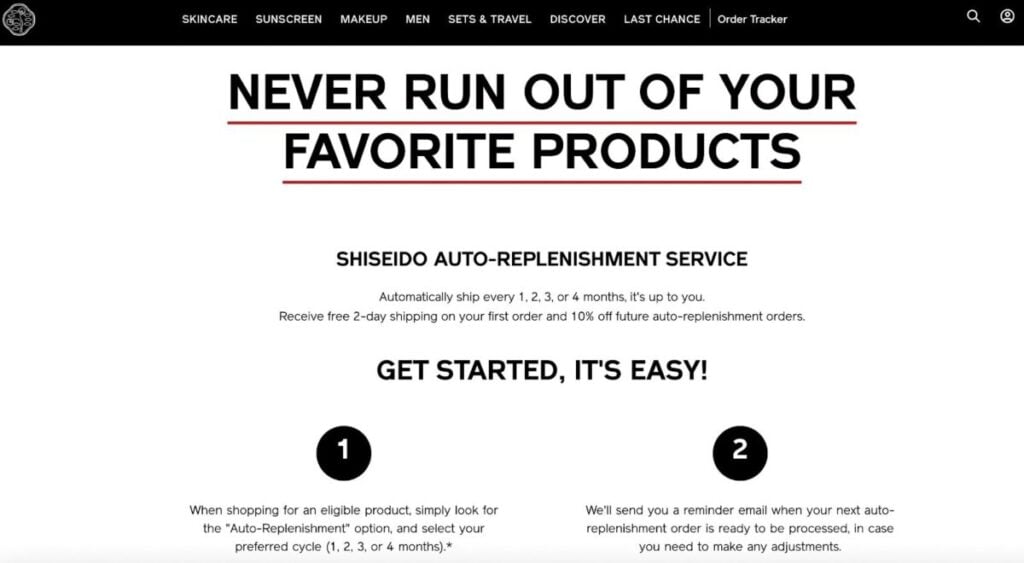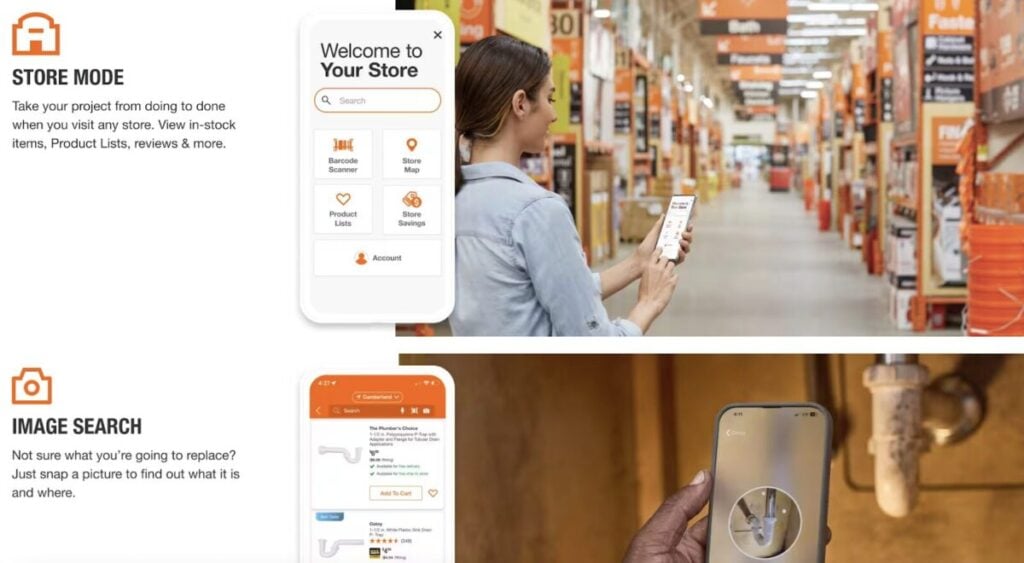With technology and the internet making things increasingly accessible, consumer expectations have adapted accordingly. Now they expect fast deliveries and instant answers no matter where they are. This is why strategies such as on-demand marketing have become so popular among brands today. In fact, on-demand marketing is more of a necessity if you want your brand to get ahead of the competition.
But what is on-demand marketing and why exactly do you need it? This post provides an in-depth look into this marketing concept and how you can get started.
What is On-Demand Marketing?
On-demand marketing is an approach that involves always being ready to deliver on customers’ needs and expectations. It’s the ability to provide engagement 24/7 based on the customer’s demand. For this, brands closely monitor consumer behavior to make predictions about what they need and when they need it so they can be ready to deliver at that exact moment.
Virtual try-on features that many websites now implement are an example of on-demand marketing. For example, Ikea’s Place app uses augmented reality to allow online shoppers to place products inside their homes and get a better sense of how they’d look in the space.
It automatically scales products according to room dimensions so shoppers can precisely see how the products would fit into the room. Shoppers can even share an image or video of the setting with their friends to get their opinion. This significantly enhances the shopping experience and guides buying decisions.
Principles of On-Demand Marketing
Now the big question is how on-demand marketing differs from traditional forms of marketing. There are a few key principles that make this approach distinct from other marketing approaches. A marketing strategy can be considered on-demand based on the following principles.
Instant
The very essence of on-demand marketing lies in immediate interactions. Customers should be able to reach your business and get the answers they need almost instantly.
That’s where messaging apps and social media channels come in, opening up a channel for customers to instantly connect with your brand. Automation tools and chatbots also come into play so you can maintain 24/7 availability to engage with your customers when and where they need it.
For example, Sprout Social uses a chatbot on social media to provide prospects with instantaneous answers to certain questions even while the team is offline. People can use the chatbot to get assistance for signing up or changing their accounts. They can even learn more about the features or submit tickets to resolve their issues without having to wait hours on the phone.
Valuable
Just because an answer was immediate doesn’t mean it was the answer your customers were looking for. On-demand marketing requires that you offer something that adds value to your customers’ lives. Whether it addresses a major pain point or helps them do something more easily, your offering should be valuable to your target audience.
For example, the Asos app offers value to users by providing notifications when their saved items are back in stock. The app also provides personalized outfit inspiration based on the user’s pics and screenshots.
Relevant
Similarly, the products and services you offer through on-demand marketing should be relevant to your customers. This means reaching them with the right offer at the right time according to their demand.
Even if a product can add value to their lives, it may not necessarily be what they need at that moment. On-demand marketing requires that you anticipate what your customers might need and provide it to them exactly when they need it instead of bombarding them with offers and solutions they don’t need.
The following replenishment email from Sephora is an excellent example of on-demand marketing that’s relevant to the customer’s needs. It anticipates when the customer might need to restock a certain skincare product (something that runs out after some use) and provides them with a button to easily restock.

Source: liveagent.com
Easy
A crucial aspect of on-demand marketing is removing friction that could get in the way of consumers making a purchase. They should be able to seamlessly interact with your business and subsequently make a purchase with minimal barriers.
This requires proactively answering any questions and doubts they may have and enabling them to easily complete the desired action. For example, you may have a dedicated “buy again” section so people don’t have to go through the whole process of finding a product they want to buy again. You could also simplify the checkout process with fewer form fields and quick checkout buttons.
Warby-Parker excels at this with an app that lets customers quickly restock contacts by simply scanning the last box. That way, customers won’t have to start from scratch to find the same pair when they need to reorder.
How Your Brand Can Benefit from On-Demand Marketing
Now that you have a clear understanding of what on-demand marketing entails, you may also have some idea of the value it can bring to your business. To help you better understand this, let’s break down the main ways your brand can benefit from it.
Boosts Conversion
On-demand marketing is personalized to meet the unique needs of your customers at exactly the right time. This means you’re delivering offers that are highly relevant to their needs at a time when they need it. So you’re reaching your customers when they’re most likely to act, which helps drive conversions.
Enhances Customer Loyalty
In on-demand marketing, the customer experience is personalized to address their unique needs and pain points. It often relies on two-way communication between the business and the customers, making the audience feel like part of the solution. This helps to improve your relationship with the customer and enhances their loyalty towards your brand.
Helps You Adapt in Real-Time
On-demand marketing allows you to quickly adapt your marketing strategies according to the changing landscape. With huge volumes of consumer data, you can get real-time insights about changes in trends, behaviors, and preferences. This can then inform how to pivot and scale to continue addressing your customers’ needs.
Getting Started with On-Demand Marketing
With the above benefits at stake, you may be curious to learn how to incorporate on-demand marketing into your strategy. Here are some essential steps to help you get started with on-demand marketing.
Understand Your Audience
Since on-demand marketing is all about addressing your customers’ needs at the right time, it all starts with having a clear understanding of your audience. Who is your target audience and what do they need? What are their biggest pain points and what motivates them to buy something? Where do they go to make their purchase and how do they seek out brands?
These are some key questions that will give you an idea of how to execute on-demand marketing. You’ll be able to understand how to target your audience with offers that specifically address their needs when they need them.
It’s important to analyze customer data to figure out their needs, behaviors, and preferences. Go beyond analytics data and extract insights from social listening and customer feedback forms. See what customers are saying to identify any unmet needs that you could address.
For example, the Goldfish brand has done a great job of implementing social listening to gauge audience needs and preferences. They discovered a demand among consumers for riskier flavors, which led to the brand’s collaboration with other brands such as Hello Kitty to develop new and interesting flavors.
Optimize Interactions Across the Customer Journey
Every interaction that your customers have with your brand should be designed for on-demand marketing. This would involve incorporating the principles mentioned earlier at various touchpoints to influence their buying decisions.
Start by mapping out the customer journey and identifying how each touchpoint could be optimized. For instance, when showing social media ads at the awareness stage, you could incorporate dynamic ads that are highly relevant to the preferences of each customer. So instead of seeing generic products, they will see products that they actually like, which could entice them to buy.
Similarly, when they’re seeking out information about your products, you could optimize their experience by providing multiple ways to discover the information. In addition to a blog page and an FAQ page, you may also include a chatbot that answers a set of predefined questions. Plus, you could offer a virtual assistant to guide their purchase decision.
Shiseido perfects this by providing multiple solutions to guide their customers’ buying decisions. This includes a product finder quiz that asks a set of questions to help customers find the perfect formulation personalized for their needs.
Customers also have the option to book a virtual consultation for personalized tips and tutorials. The consultation involves a one-on-one video session with the brand’s beauty experts, addressing the customer’s need for expert assistance no matter where they are.
And once customers are ready to purchase, they can even sign up for Shiseido’s auto-replenishment service. This sets eligible products to automatically ship out at regular intervals based on your preferred cycle. Through this service, the brand proactively engages customers to make repeat purchases and turns them into loyal customers.
Invest in an Omnichannel Experience
On-demand marketing is also about reaching your customers when they want wherever they want. This means that your brand should be accessible to them no matter which channel they decide to use. So it’s crucial to invest in an omnichannel experience and maintain a brand presence across every channel that your customers use.
Home Depot seamlessly blends the online and in-store experience with a mobile app that addresses key customer concerns. Besides a room visualizer like the Ikea Place app mentioned earlier, customers can use the app to take a picture of an object and find out what it is. That way, you can easily find the name of a part that needs replacing and start shopping for it online.
Additionally, the app enhances the in-store shopping experience by letting shoppers view what’s in stock at a particular store. It allows them to scan barcodes and check out online reviews for specific products, which guides their purchase decisions. They can even use a product locator to navigate the store and quickly find what they need.
This type of enhanced omnichannel experience allows you to seamlessly drive meaningful engagements no matter which channel the customer is using. They can find what they need when they need it no matter where they are, making it an essential part of on-demand marketing.
Leverage Automation Software
On-demand marketing may seem extremely challenging as it involves maintaining 24/7 availability. In fact, it may even seem virtually impossible as it would require spending a significant portion of your time and investing in a huge workforce. This is where automation software comes in, helping you fill the gaps resulting from limited resources.
Essentially, automation software lets you automate your communications to maintain consistent customer interactions across various channels. This would involve tasks such as sending emails triggered by specific actions and events based on a defined automation workflow, for example. It would also involve setting up chatbots to provide automated responses according to a predefined set of questions.
Companies like Snatcher have been able to send automated cart abandonment emails to significantly improve their bottom line. Automating these emails allowed them to re-engage shoppers who had items left in their carts, resulting in a 74% revenue increase.
Additionally, automation can be in the form of smart recommendations based on a customer’s behaviors and purchase history. These recommendations are made using machine learning algorithms that account for each customer’s behavioral patterns and user data. This allows the system to target the customer with products or content suggestions specifically personalized for them.
Get Ready to Engage Your Customers On-Demand
You now have an in-depth understanding of what on-demand marketing is and how it can be applied to your business. Make the most of the tips and ideas shared above to drive meaningful engagements on-demand.
Frequently Asked Questions
What is on-demand in marketing?
In marketing, on-demand is an approach that involves being ready to engage 24/7 based on the customer’s demand.
What is an on-demand company?
An on-demand company is one that provides services to the customer when and where they want them.
What are the benefits of on-demand marketing?
On-demand marketing offers the advantage of flexibility and scalability. It also drives conversion and improves customer loyalty.
What are some on-demand marketing examples?
An on-demand marketing example is a business providing an app where customers can virtually try on products from the online store. Another example is a customer being able to scan barcodes in the store to check reviews of the same product online.
What does on-demand stand for?
On-demand stands for something that’s accessible to consumers based on their demand.

